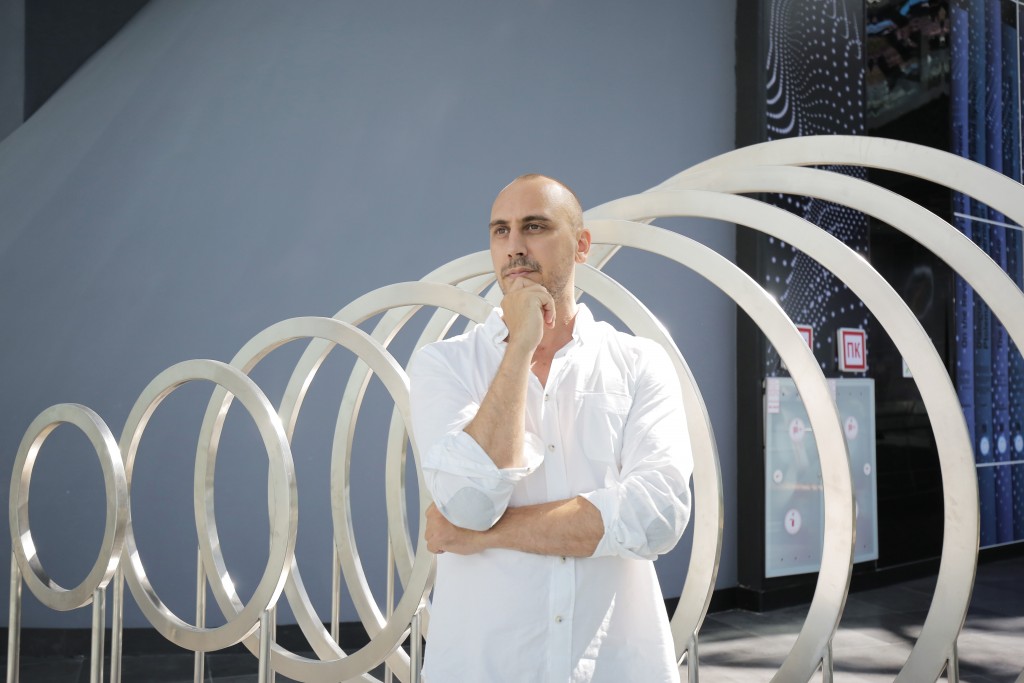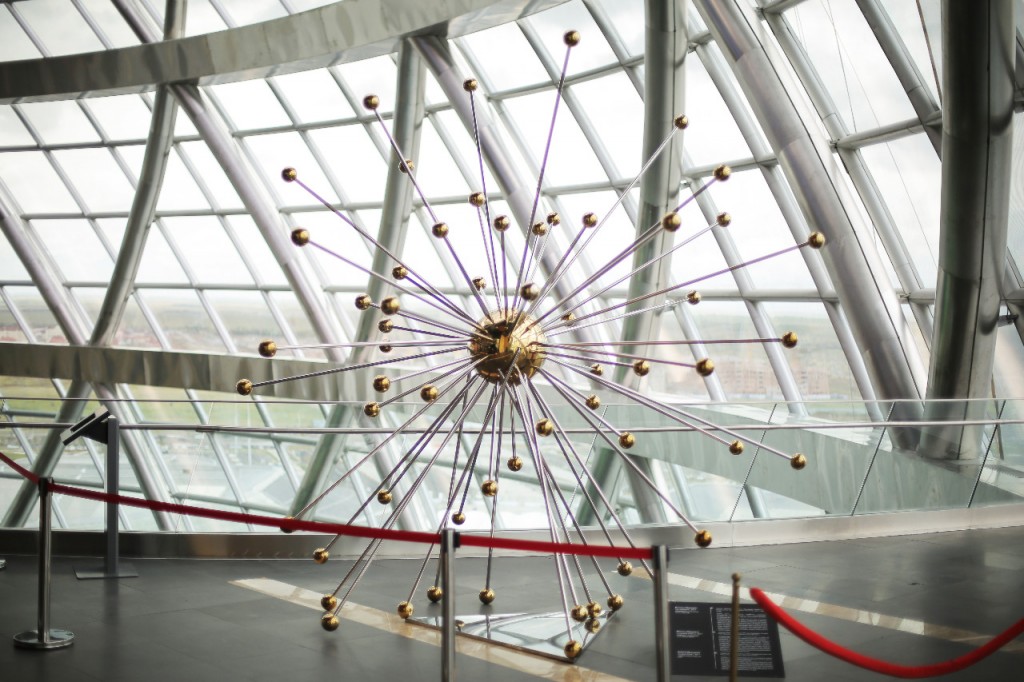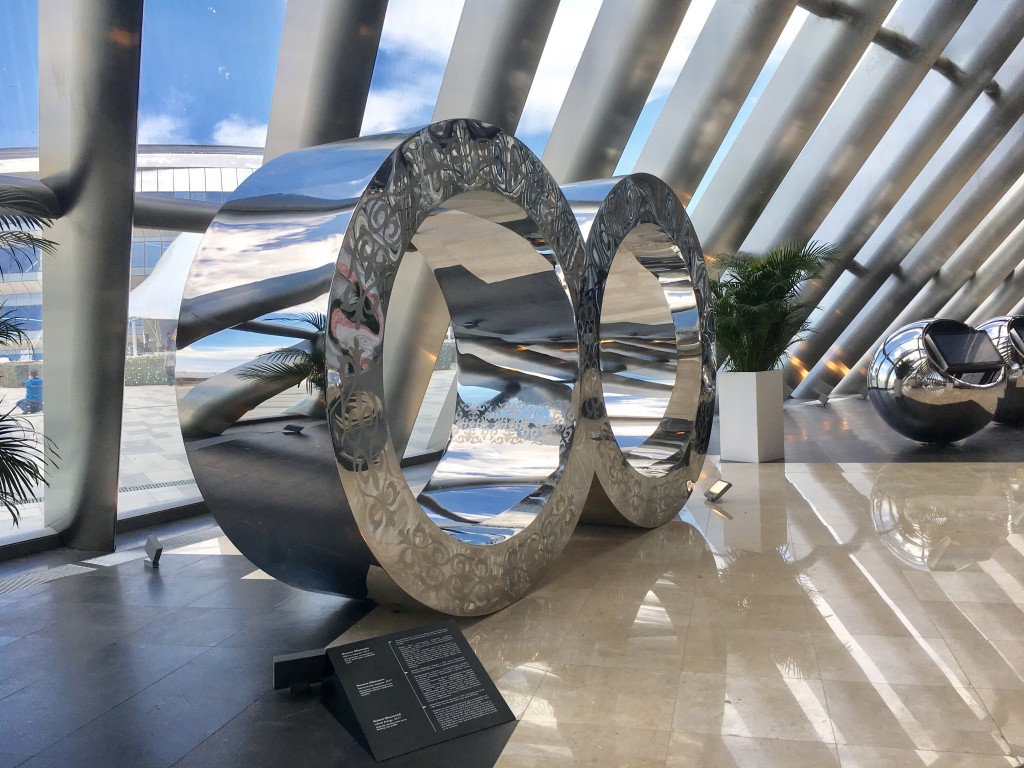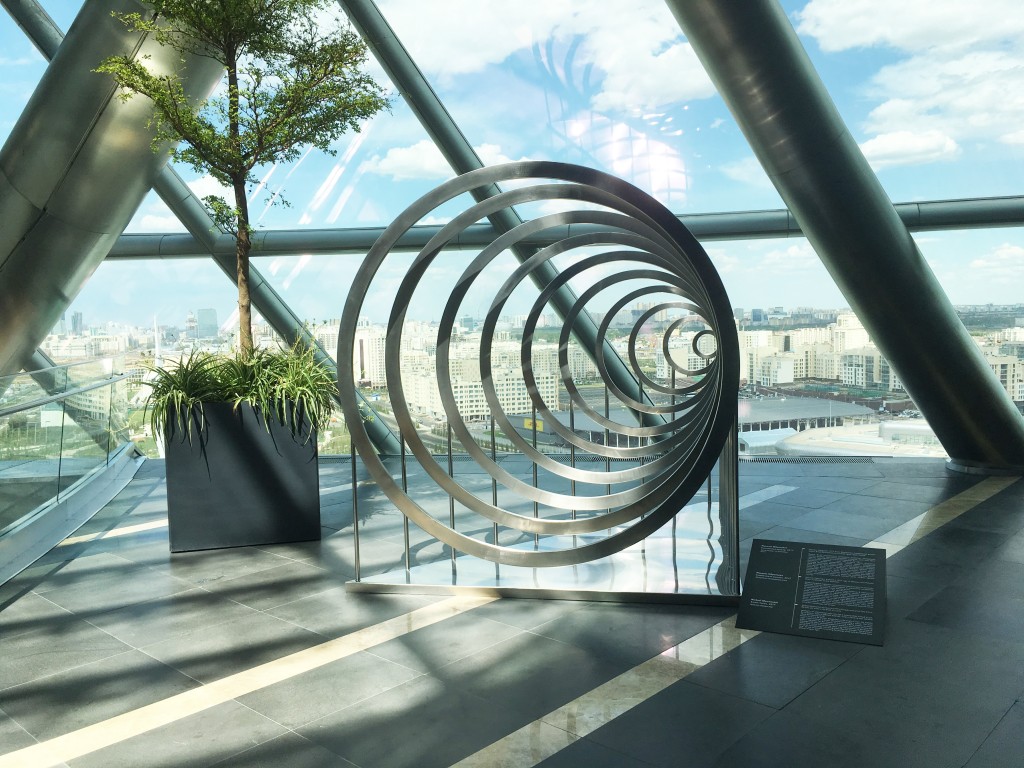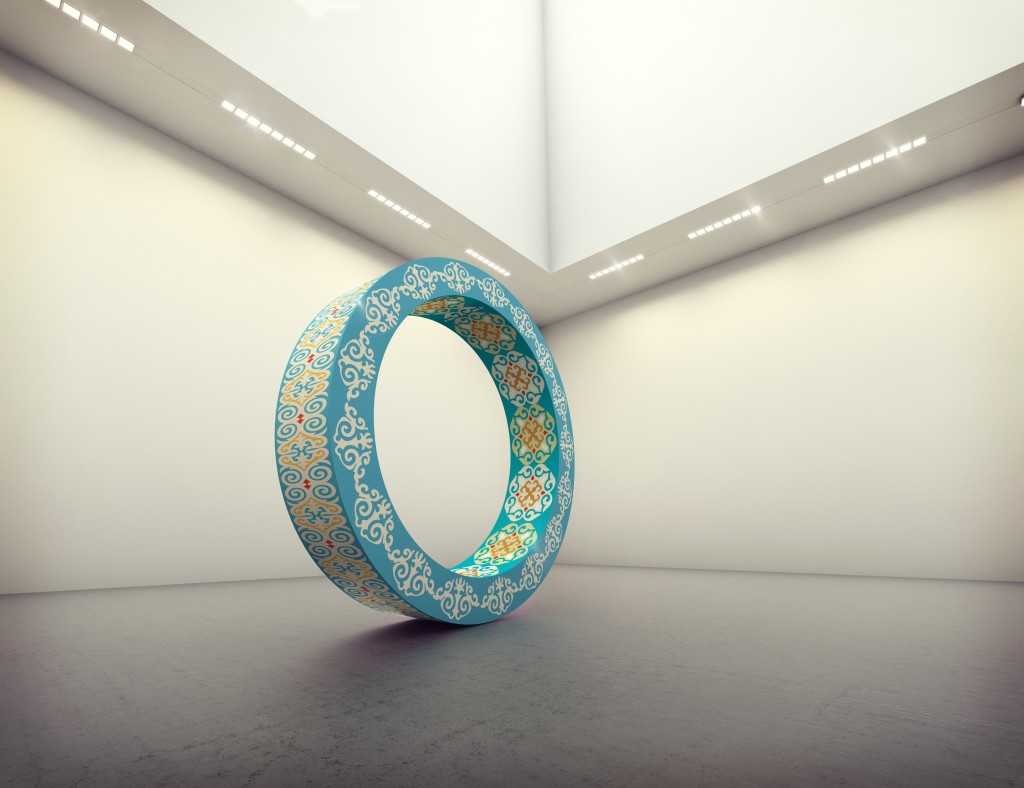ASTANA – Contemporary French artist Mickael Obrenovitch created five amazing sculptures for the giant Nur Alem sphere at EXPO 2017. Many visitors saw the works, but few know the ideas and processes behind them.
“My goal was to create accessible and attractive artwork that can talk to anyone simply with a relative abstract concept. At the expo, each floor had a different theme and each sculpture had to represent the theme. I designed each sculpture based on one word (solar energy, cosmos and others) that would talk and touch the public to understand the cause and defend it for the future generation,” said Obrenovitch in an interview with The Astana Times.
Sunshine Power “symbolises the sun and the solar power it produces, like a fission of molecules from the centre which releases energy,” he noted.
Infinity Energy, the large-scale infinity symbol, represents the unlimited potential of renewable energy and natural sources that can still be found on Earth and the universe. It is also his personal favourite for “the beauty of the shape, the size and meaning of this beautiful result,” he said.
“Infinity is the word that defines my life line and spirit and you can find it in all my collections as well,” he added.
Solar Wall seeks to show the importance of solar energy for the future as inspired by nature. It is an evolution to protect and live in symbiosis with the environment, noted Obrenovitch.
The Kinetic Vortex art installation is a metaphor of the cosmos.
“It appears to be a tunnel, but depending on your position it can have a vortex effect,” he said.
Newton’s Cradle, a reference to perpetual motion, shows guests how kinetic energy works and the way human action or movement can cause a chain reaction in the environment.
All the works are made of stainless steel. The materials were chosen based on quality, durability and in conjunction with the splendid architecture of the capital, he said.
The design took about a month, followed by five months of production and installation.
“I’m very lucky and grateful for the professional work by the Kazakh factories. It could not have happened without them for sure. Solar Wall was made in Pavlodar and the others in Almaty. I’m grateful for the work they accomplished and passion they put into it. Each sculpture may look minimalistic, but it’s a very technical challenge to design it. Infinity and Solar Wall were particularly complicated to make and I was very impressed by the skill used to find a solution with ingenuity. Transport and installation was another story, but with a happy ending, of course,” said Obrenovitch.
The sphere will remain as a museum, meaning these and many other works of art will be available for future display.
“I was very happy they decided to turn it into an expo heritage museum. It’s a brilliant idea, as it is still able to create awareness to the next generation about future energy. I hope the expo will be a turn and milestone to bring Kazakhstan to the hub of renewable energy and innovative sustainable development purposes,” he added.
The artist was born in Carqueiranne, a seaside town on the French Riviera.
“My passion for art and history was passed on to me as a child from my relatives, who would take me to see exhibitions. I decided to study applied art and design at a university. From there, I turned my passion into a career and am now a full-time artist. As I like to say – there are no limits to creativity, only the ones you impose on yourself,” he said.
Obrenovitch began work last year on the international art project Gates of the World and presented the Gate of Kazakhstan portion to different institutes in the country. The expo curator so appreciated the work he asked the artist to create designs tailored to the exhibition’s future energy theme.
The event became a wonderful chance to make his inaugural visit to the nation.
“I like Kazakhstan a lot and travelled throughout the country experiencing firsthand its culture and people as well as learning about its fascinating history. It’s a point in the world where all neighbouring cultures harmoniously mix in one country. Nature is beautiful and wild and I was particularly impressed by the infinite steppe landscape on the road to Burabai,” said Obrenovitch, adding he was also enthralled by the architecture, culture and lifestyle in Almaty and the capital, nature in Burabai, authenticity of the Pavlodar people and the city itself.
“I’d say to expect the unexpected and I look forward to discovering more of what it has to offer there soon,” he said.
His personal digital art collection exhibition recently completed a showing at the Ritz Carlton Almaty and he is seeking a venue for another collection in production.
“I was contacted by various Kazakh institutes to create an original sculpture which should start in March 2018. I would like to achieve what I originally planned to come here for in the first place, which is the Gate of Kazakhstan. I would love to present it directly to the Ministry of Culture and [President] Nursultan Nazarbayev, whom I didn’t have the chance to meet during the expo,” he said.
“In terms of international projects, I am working on several collections, including gates for all countries in the world, and I am preparing a proposal for the universal expo in Dubai 2020. My best project is yet to come,” said Obrenovitch.
More information is available at the artist’s website, www.obrenovitch.com, and Instagram account, @obrenovitch.



